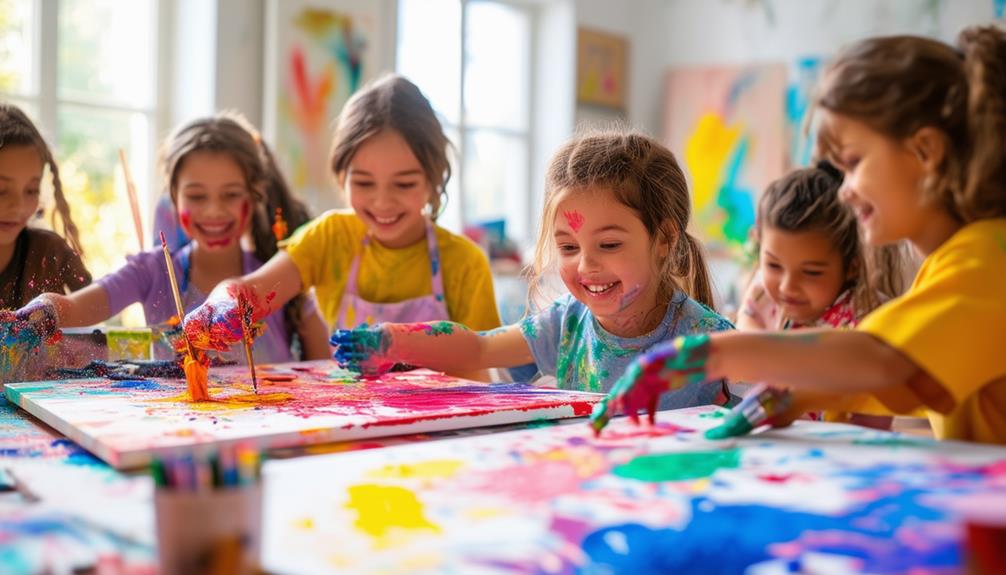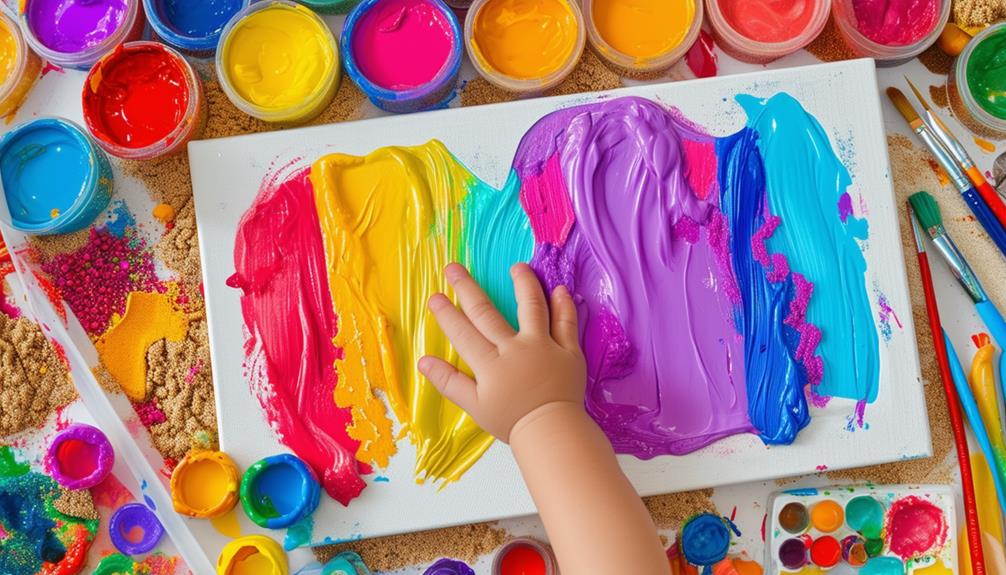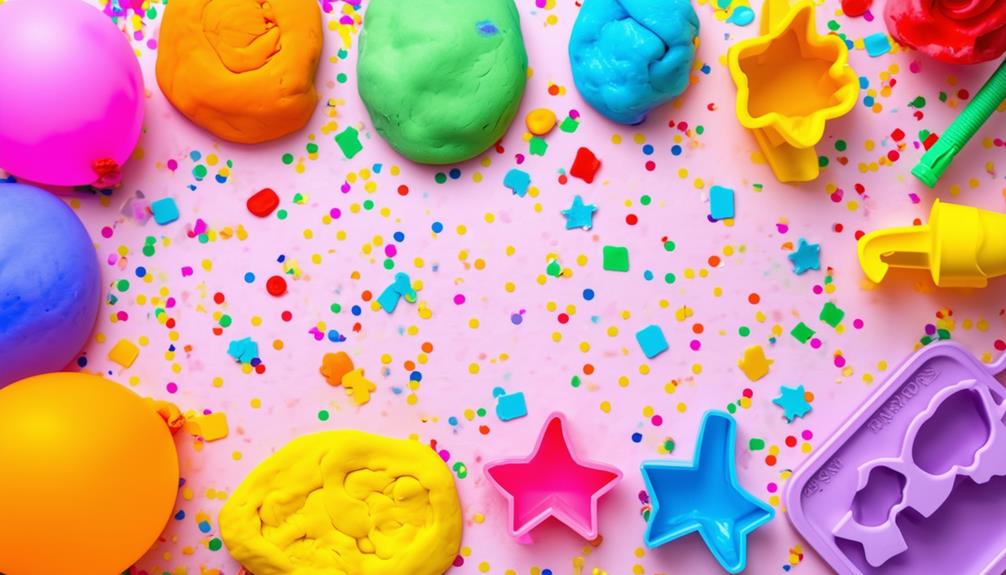Playdough and Language Development: Fun Learning Activities
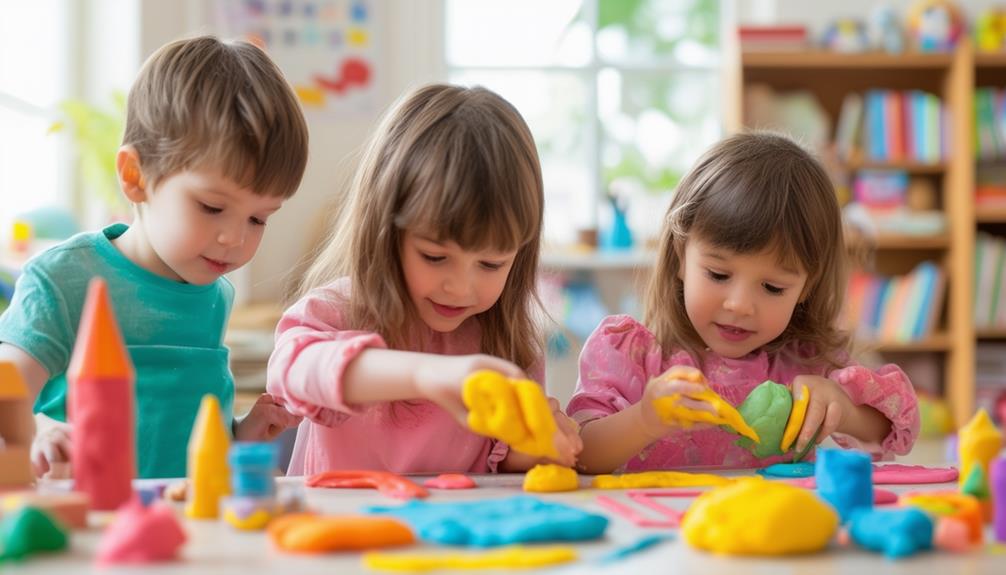
Imagine your child joyfully describing their vibrant playdough creations, broadening their vocabulary with every squeeze and roll. Playdough isn't just about fun; it's a powerful tool for language development. As they shape animals or food items, they'll naturally practice categorizing and using action words, thereby enhancing their communication skills through play. You might wonder how to seamlessly integrate these activities into daily routines and what specific language goals to focus on. There are various interactive playdough activities that can make learning both engaging and educational. Let's explore some practical ways to get started.
Benefits of Playdough
Engaging young children in playdough activities enhances their communication skills through interactive, hands-on experiences. While manipulating playdough, children are not only having fun but also advancing their language development. As they mold and shape the dough, they describe their creations and use new vocabulary, thereby practicing categorization skills by forming different shapes and objects.
During play, children frequently use action words like 'roll,' 'squish,' and 'flatten,' which are essential for language acquisition. Playdough activities offer a meaningful way to boost communication skills. Asking children to explain their creations encourages them to articulate their thoughts clearly.
Additionally, playdough serves as an effective tool for modeling vocabulary. By demonstrating and describing actions with the dough, you can introduce new words in an engaging manner. This interactive language learning method is both enjoyable and educational. Thus, playdough activities not only entertain but also lay the foundation for strong communication skills and robust language development.
Joan's Playdough Recipe
Joan's playdough recipe is a simple and enjoyable way to create colorful, homemade playdough for children's activities. This easy-to-follow guide not only fosters creativity but also enhances language development as children engage in play. Here's what you'll need:
Ingredients:
- Plain flour
- Salt
- Cream of Tartar
- Oil
- Boiling water
- Food coloring
Steps:
- Mix Dry Ingredients: Combine the flour, salt, and Cream of Tartar in a large bowl.
- Add Wet Ingredients: Pour in the oil and boiling water, then stir until the mixture is smooth.
- Add Color: Mix in food coloring to achieve the desired hue.
Finishing Touches:
Knead the dough on a floured surface, adding more flour if necessary to reach the perfect consistency. Creating this playdough is a fantastic hands-on learning activity. It encourages children to follow instructions, enhancing their vocabulary and comprehension. As they mix and knead, they develop fine motor skills and practice descriptive language. Whether crafting themed creations or simply having fun, this recipe transforms learning into a playful experience. Gather your ingredients and enjoy this delightful activity that merges creativity with educational benefits!
Playdough Language Objectives

As children engage with Joan's homemade playdough, you can target specific language goals to enhance their vocabulary and sentence formation skills. By incorporating playdough activities, you offer young children a fun, interactive way to improve their speech and language abilities. Encourage them to verbalize the actions they perform, such as cutting, squeezing, and rolling, as these action words are essential for developing strong language skills.
Promote language-rich play by modeling various verbs during activities. For instance, you might say, "Let's roll the playdough into a ball," or "Can you squeeze it flat?" This helps children understand and effectively use specific verbs. Expanding their play with pretend scenarios, like creating a bakery or a zoo, combines actions with objects and encourages more complex sentence formation.
Incorporating these language goals during playdough activities not only makes learning enjoyable but also significantly supports your child's speech and language development. Consistent practice and engagement are crucial for helping young children build robust language skills.
Engaging Playdough Activities
Engaging playdough activities such as creating a bakery, zoo, or restaurant can ignite a child's imagination while developing their language and motor skills. Through pretend play, children can immerse themselves in different roles, enriching their vocabulary with new words and phrases. These activities also enhance fine motor skills as children manipulate the playdough by rolling, shaping, and molding it into various objects.
Here are three engaging playdough activities to try:
- Playdough Bakery: Encourage your child to create baked goods like cookies, cakes, and bread. They can describe the ingredients and steps, practicing sequencing and descriptive language.
- Playdough Zoo: Have your child mold different animals and set up a zoo. They can name the animals, describe their habitats, and tell stories about their adventures, enhancing their storytelling abilities.
- Playdough Restaurant: Set up a pretend restaurant where your child can create dishes, take orders, and serve customers. This activity develops conversational skills and introduces them to restaurant-related vocabulary.
These activities not only foster creativity but also offer a fun, interactive way for children to enrich their language skills through play.
Sensory Play With Playdough
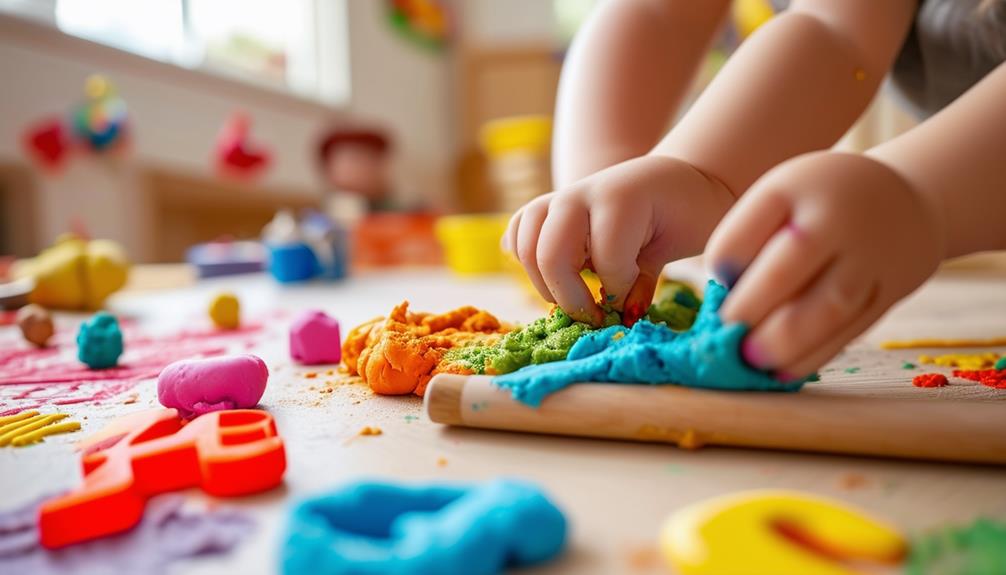
Sensory play with playdough provides children with a rich, hands-on experience that stimulates their senses and supports their overall development. As kids engage in playdough activities, they explore various textures and sensations, enhancing their sensory integration and helping them understand and process sensory information from their environment.
Manipulating playdough aids in the development of fine motor skills as children pinch, roll, and shape the dough. These activities strengthen the small muscles in their hands and fingers, essential for tasks like writing and buttoning clothes. Additionally, sensory play with playdough can be calming and enjoyable, offering an excellent outlet for kids to express themselves and regulate their emotions.
Playdough activities also enhance focus and concentration. As children immerse themselves in their creations, they learn to pay attention to details and complete tasks. This focused play is particularly beneficial for children who need support in managing their emotions and maintaining attention. Overall, sensory play with playdough blends fun with fundamental skills, contributing to child development in multiple areas.
Playdough for Speech Development
Playing with playdough offers more than just fun; it enhances vocabulary and promotes verbal interaction. Encourage your child to use specific verbs like 'squish' and 'roll' during play. This activity not only builds their language skills but also fosters meaningful conversations.
Enhancing Vocabulary Skills
Incorporating playdough into activities can significantly enhance children's vocabulary skills by introducing them to action words and early concept words. Using playdough to model vocabulary targets and categorization skills makes language development both enjoyable and interactive. By creating shapes and objects with playdough, children can learn and practice new words, thereby enhancing their speech development.
Here are three engaging methods to improve vocabulary skills with playdough:
- Action Words: Encourage children to use verbs like 'roll,' 'squeeze,' 'flatten,' and 'cut' while playing with playdough. Associating these actions with playdough activities helps them remember and use these words in everyday speech.
- Descriptive Language: Prompt children to describe their creations with questions like, 'What color is your playdough?' or 'How does it feel?' This helps them expand their descriptive vocabulary with words like 'soft,' 'smooth,' 'bumpy,' and 'squishy.'
- Concept Words: Introduce basic concepts such as shapes, sizes, and numbers. Have them create circles, squares, or varying-sized objects. This enriches vocabulary and builds foundational skills for future learning.
Engaging children in these playdough activities makes language development both enjoyable and effective.
Promoting Verbal Interaction
Engaging with playdough encourages children to practice verbal interaction, enhancing their speech development in a fun and interactive manner. When kids manipulate playdough, they naturally start describing their actions, boosting their vocabulary and communication skills. Integrating playdough into language activities provides a hands-on approach to practicing speech sounds and language concepts, making learning enjoyable.
To further promote verbal interaction, guide children through structured playdough activities that encourage dialogue. Ask questions about their creations or prompt them to explain their process. This interaction not only aids speech development but also fosters critical thinking and creativity.
Here's a simple table to visualize ideas for promoting verbal interaction with playdough:
| Activity Idea | Verbal Interaction Prompt | Language Skills Developed |
|---|---|---|
| Shape Creation | 'What design are you making?' | Vocabulary, Descriptive Words |
| Playdough Storytelling | 'Share a tale about your model.' | Narrative Skills, Sequencing |
| Collaborative Building | 'How can we assemble this together?' | Teamwork, Communication |
Family Bonding With Playdough
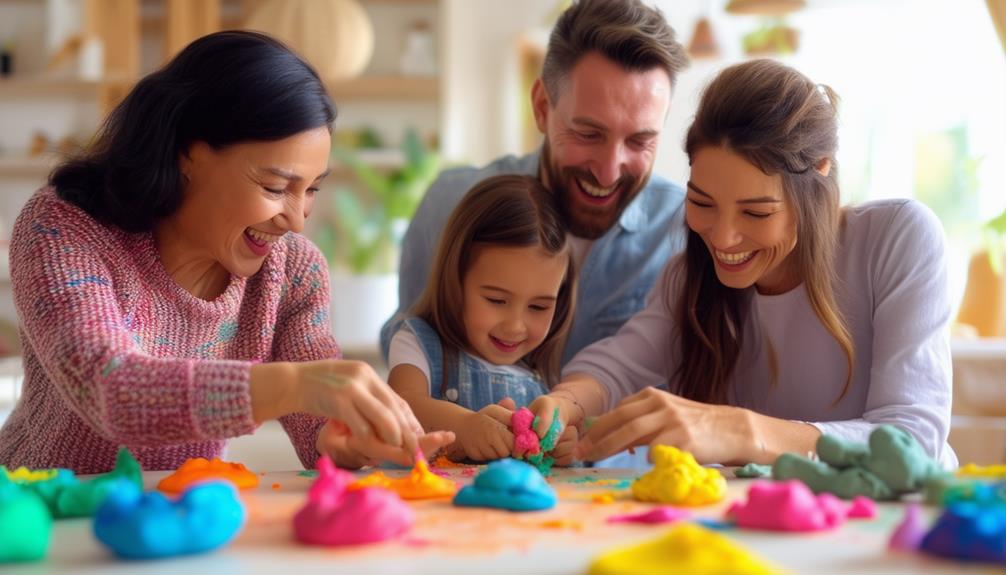
Engaging in playdough activities with your family strengthens bonds by fostering creativity and shared joy. By diving into the world of playdough together, you create an opportunity for interactive learning and meaningful parent-child interactions, enhancing relationships and building lasting memories.
Here's how playdough activities promote family bonding:
- Enhances Emotional Expression: Playdough allows both kids and adults to express their emotions through creative shapes and figures, facilitating better understanding and communication of feelings.
- Fosters Problem-Solving Skills: Collaborating on playdough projects requires teamwork, which helps develop problem-solving skills and strengthens the parent-child connection.
- Creates Shared Memories: The act of creating and playing with playdough together builds joyful, lasting memories that your family will cherish for years to come.

